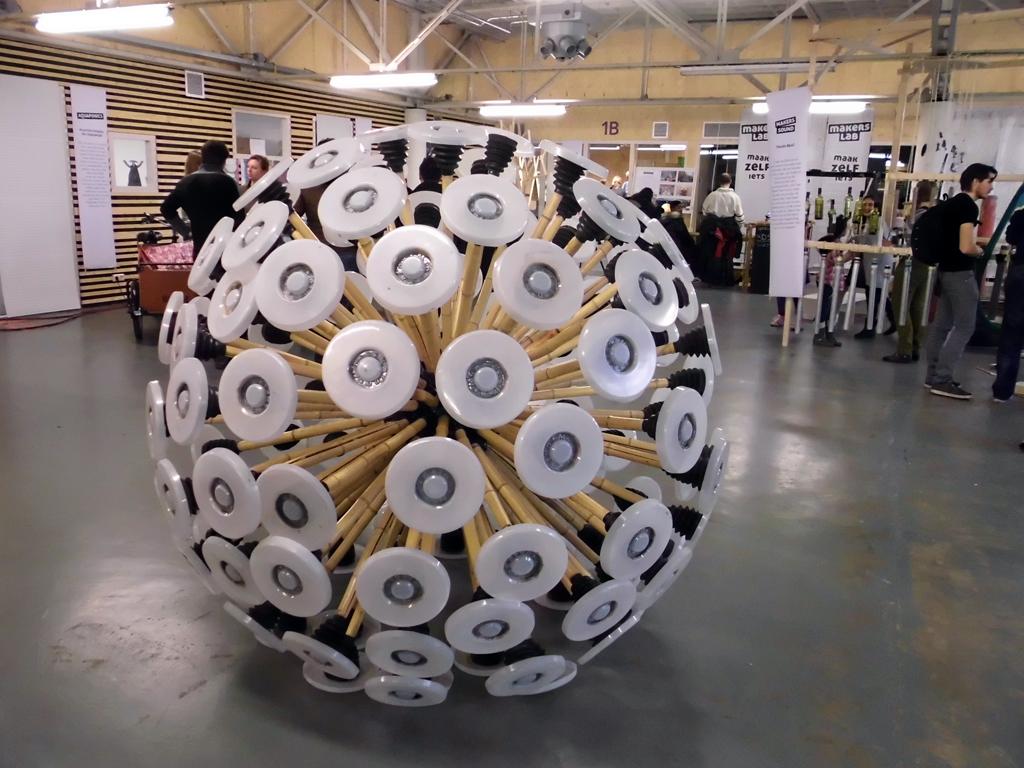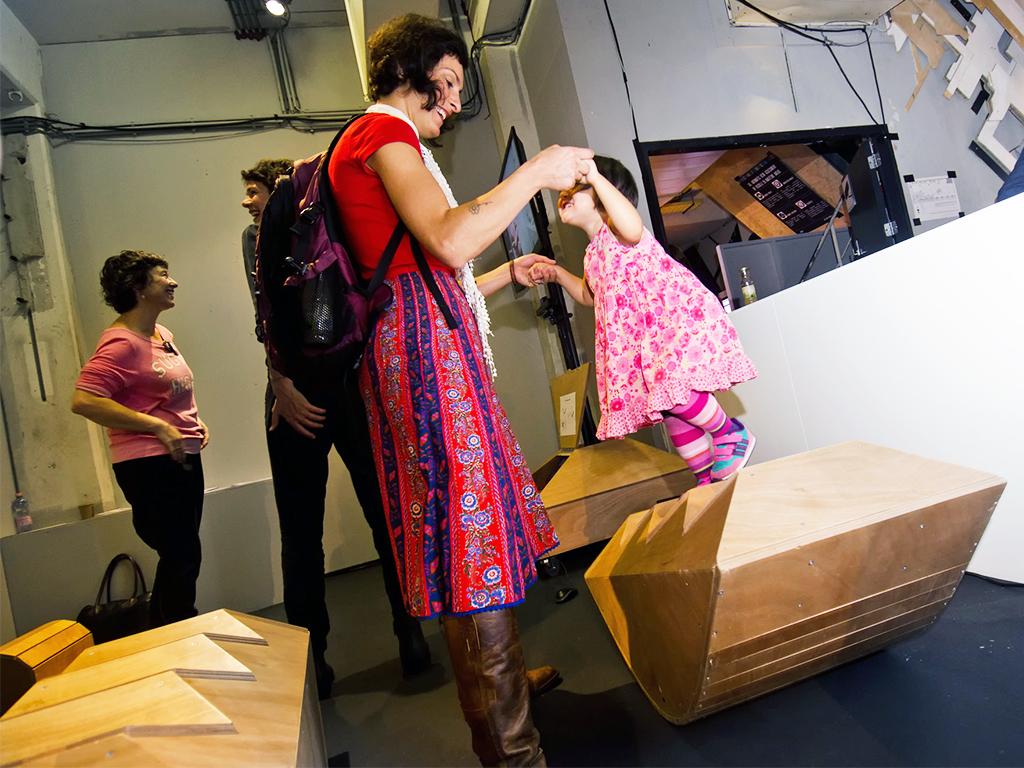At the Garage Notweg, a former garage in the western parts of Amsterdam, the Makers Festival 2013 was held on 30 November. The street in front of the building made the headlines when a group of refugees camped here in a protest against their situation. The big space inside the building formed the background during this day for a large number of local initiatives to enhance the neighbourhood, for creative workshops and lots of things to make yourself. That could be in the form of music, on an installation made of all kinds of household appliances. Or, for the more patient among us: a sculpture created with the 3D printer. Faster: a chair from ready-made wooden panels that could be used to create different models of chairs right on the spot.
We were present with our 'Mood Room' and 'Talking Data', by Laurens Schuurkamp and Bert Spaan. The Mood Room is an interactive installation, that you design and play via the Kinect. You can adjust several parameters by using your hands and thus influence things like colour, form and sound. It always strikes me that children just go ahead and play with thse kind of installations, while grown-ups always ask questions first, such as "what can you do with this?" or "what is this for?". I noticed that the (young) children that were present instantly started moving around, perhaps inspired by the funny characters they were represented by on the screen. The target group for this installation is a bit older and the aim is that you can express feelings or moods with it that are harder to describe in other ways. Read this article by Meia Wippoo about the idea behind it: 'How are you today?'.
Elsewhere on this lively makers market Talking Data could be found, with a vinylcutter and press to print your own t-shirts with datavisualisations. We have done this a couple of times now at events, and it is surprisingly easy how you can connect places on the map and produce a print from it. You can use any story that can be captured in a number of locations, but as long as nobody can see the map behind it, they have no clue what the print is about. Come to think of it, it would be a perfect gift to make at the Fablab.

A special exhibit in this context was the presence of the 'Mine Kafon' by designer Massoud Hassani, a device to safely deactivate land mines. This invention was not on display before, it could only be seen in this video. It consists of bamboo pipes with a plastic round foot attached, placed on a cast-iron sphere. It looks at lot like the seeds on the head of a dandelion, also carried by the wind. At the moment, Massoud and his brother are working on an improved version.
A very nice event, and a nice Turkish lentil soup and Ethiopian coffee completed the experience.


